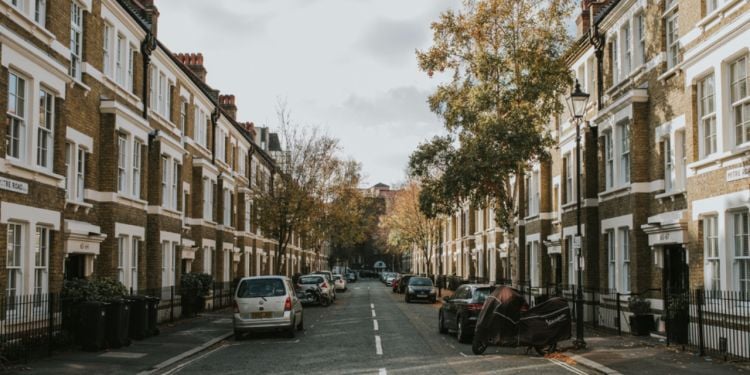
If you are moving to London for an executive job, you can probably afford a house in one of London's wealthy areas in the West, such as the artsy Notting Hill or the exclusive Knightsbridge, south of Hyde Park. Islington also is an excellent option to consider. Only 20 minutes from central London, Islington was named the second happiest borough. However, for the median expat, looking for a popular yet affordable spot, Bromley is only 15 minutes from central Victoria and was ranked as one of the happiest and best places to live in London.
West London
West London is on the wish list of many Londoners and expats for its lush parks, iconic architecture, top-notch schools, and posh vibe. There are over 60 neighbourhoods in West London, and we suggest some of the best if cost isn't your primary concern.
Kensington and Chelsea
King's Road, the street stretching through Chelsea and Fulham, is where the action is — in the busy cafés, bars, and many fashion shops. Besides a bustling social life, there's the renowned contemporary art gallery of Saatchi, a couple of theatres, and the atmospheric Curzon cinema, with an over 80-year legacy in cinematography. If your work is in North or South London, remember that transport links from Sloane Square Station aren't excellent — the average property costs around £2 million in Kensington and Chelsea.
Notting Hill
Everyone agrees that Notting Hill has a bohemian aura with its vintage shops and stalls on Portobello Road and the annual August Notting Hill Carnival, bringing the Caribbean culture to your door. Notting Hill tube station is on all Central, Circle, and District lines, making the area easily accessible. With its rows of pastel-coloured houses, Notting Hill's reputation as one of the most desirable places to live in London explains why renting here costs about 90% more than the London average.
Good to know:
Consider Shepherd's Bush or Ealing if you want a sophisticated, Notting-Hill-like ambiance but with less expensive rents.
Fulham
Fulham is also very close to the previously mentioned lively King's Road and Sloane Square, which is in the epicentre of high-end stores and dining spots. Fulham also boasts a social hub with local cafés, eateries, and parks. Chelsea and Fulham football clubs are located in the area, leading to cumbersome and noisy traffic on match days.
Good to know:
Fulham is known to be relatively safe and peaceful compared to Central London.
Hammersmith
Hammersmith has it all: the buzz that comes with the shops, restaurants, bars, and music venues, and the chilled atmosphere, which you can enjoy on the Thames' riverside. Also, Hammersmith hosts the head offices of international corporations such as L'Oreal and Disney, making the area ideal for creative professionals looking to live in modern apartments. Hammersmith is an excellent spot for those who often commute. The District, Piccadilly, Circle, and Hammersmith lines cross the neighbourhood. In addition, commuters will be facilitated by the big Hammersmith bus station.
Chiswick
Chiswick is preferred mainly by affluent families thanks to its safe environment, the slow pace of life, green spaces, and reputable primary schools. However, whenever you need to or feel like entering the hecticness of Central London, you can easily do so in less than half an hour. Chiswick offers mansion flats, elegant cottages, and large detached houses overlooking the Thames River to cater to the affluent families who move there.
North London
Similarly, North London represents the glamorous side of London, but with fewer high-end designer boutiques. Along Green Lanes, one of the longest streets in London (about 10 km), there are international restaurants and independent shops. You can find anything here, from electricals and houseware to fruits and vegetables. North London comprises six boroughs and is home to close to 1 million people.
Islington
Islington was an overcrowded suburb, which has evolved into an elite neighbourhood. Islington Upper Street boasts independent shops, trendy boutiques, international restaurants, and casual eateries even for the most sophisticated taste buds. One of Islington's best selling points is its connectivity as well as some of the best pubs in London. From Highbury and Islington tube station, you can reach the busy Oxford Circus in just seven minutes.
Good to know:
During World War II, George Orwell worked in what used to be the Ministry of Information. Today, this is the Senate House Library, the central library for the University of London and the School of Advanced Study.
Bloomsbury
Your life in Bloomsbury will likely be so fulfilling that you won't feel the need to leave your area, as it has it all: the British Museum with its ancient treasures, cosy cafés, fine eateries, bookshops, the renowned UCL, and many green spaces for relaxing strolls. In Bloomsbury, you don't need a car as you can walk or cycle to Central London or take the tube from one of the nearest stations: Tottenham Court Road, Holborn, Russell Square, King's Cross & St Pancras, or Chancery Lane.
Good to know:
In Bloomsbury, Georgian houses and Edwardian mansions, which sell for up to six million pounds, are more common than modern flats.
King's Cross
King's Cross is made up of seven neighbourhoods. It got its name from the statue of King George IV at the crossroads of Euston Road, York Way, Pentonville Road, and Grays Inn Road. Even though the monument stood there only for nine years and was demolished in 1845, the area kept the name. King's Cross tube station opened in 1852, and as the largest railway station in the country, it turned King's Cross into a central transportation hub — a title which, more recently, was enhanced by the Eurostar terminal. However, there's more to the area than good national and international transport connections. For instance, the reimagined shopping experience at the well-conserved Victorian viaducts, now known as Coal Drops Yard.
Camden Town
Camden Town is mainly known for its markets (Camden Lock, Buck Street, and Stables Market), the Camden Lock Village development, and Proud Galleries, which hosts an extensive collection of photography shows. Camden Town, home to various live music venues, deserves recognition as London's heart of the music scene. However, if you aren't a night owl expat, you can find meaning in family picnics in Regent's Park, where the London Zoo is.
Good to know:
Camden Town used to be the meeting point for punks and alternative musicians. Today, it is one of the most visited areas in London by tourists, with over 25 million per year.
Central London
Within Central London, you will find everything that London is known for: the Parliament and the Royal Palaces, the Law Courts, the British Museum, the National Gallery, the Tate, the University of London, and the headquarters of some of the biggest global corporations. Due to limited housing options, on one hand, and exorbitant rates for rent, on the other, Central London has a small number of permanent residents and is a place to work and have fun rather than live.
The City of London
The size of the City of London (or The Square Mile) is small, but there's so much going on within this space: museums, art galleries, bars, restaurants, shops, and so forth. There are plans to renovate vacant offices, build at least 1,500 affordable homes by 2030, and shopping space. So far, shopping options are limited to supermarkets and convenience stores serving the needs of professionals rather than families. At the same time, the City of London will be rebranding itself from a primary business and finance centre to a community-oriented cultural hub with festivals, art events, and a focus on non-traditional City sectors (e.g., creative industries, bioscience, etc.).
Good to know:
Less than 10,000 people reside in the City of London, but has more than 500,000 daily commuters.
Important:
Those living in the City are in the Central Congestion Zone. However, residents are entitled to discounts.
West End
If you are the expat who doesn't want to miss out on evening entertainment and wishes to be in the centre of the London nightlife, you must look no further than the world-famous West End. The area is at the centre of the capital city, and all underground lines pass through here. Living here will enhance your love for theatre. Also known as the fashionable end of London, West End is one of the best theatre districts in the world. In addition, here, you have numerous dining options, including Michelin-starred restaurants. West End is also a famous shopping spot; from Oxford Street's numerous shops to Soho's Carnaby Street boutiques, shopping will become a way of life in this area.
Good to know:
On Fridays, The National Gallery on Trafalgar Square stays open till 9 p.m.; apart from world-class art exhibitions, it hosts workshops, talks, classes, and music events.
Useful link:
A guide to Carnaby Street, Soho
Covent Garden
Covent Garden's residents are exclusive people who can afford to live in one of London's most touristy and creative spots. Covent Garden is quieter than neighbouring Soho, a fair representation of London's bar and restaurant scene. It's not easy to find a big house here, but there are different types of flats in contemporary blocks and historic buildings. Like all central areas, Covent Garden is linked to the rest of London with tube and bus services, and many favourite places, such as Waterloo and Oxford Street are within walking distance.
Useful Link:
What's happening in Covent Garden
East London
What used to be a disadvantaged area of London twenty years ago has become the fastest-growing district in the city, one that successfully marries the old with the new and the decayed with the upgraded. The 2012 Olympics improved the infrastructure with developments such as the Queen Elizabeth Olympic Park and Westfield Stratford City, as well as the London transportation system of the region. The area attracts fashionistas and hipsters in Spitalfields, Shoreditch, and Hoxton, as well as more conservative and affluent crowds in Canary Wharf and Mile End.
Hackney
Hackney has become a place for hipsters and young artists, a trendy crowd that has upgraded the area and has contributed to rent increases. Although Hackney doesn't have a tube station, Hackney Central and Hackney Downs railway stations connect the area with Liverpool Street underground station. Hackney's crime levels remain higher than the London average, especially for bicycle theft. If you are worried about how much green you will find in this undeniably urban region, here is some good news for you: There are about 50 parks in Hackney, with the most popular being Clissold Park, Abney Park, and Hackney Downs.
Greenwich
On the banks of the Thames, Greenwich is a large area unofficially divided into East and West Greenwich, and in between the two is the quiet town centre. Due to its suburban feel, the residents of Greenwich are primarily families and young professionals who commute to central London. However, keep in mind that Greenwich isn't isolated as it is less than ten kilometres away from Central London (it takes ten minutes by train to London Bridge, and you can also travel by riverboat), giving you the option to join the hustle and bustle of the super cool neighbourhoods of London.
Important:
If you plan to commute, remember that you will be travelling with many others, and trains from and to Greenwich will be jam-packed in rush hours. Thus, give yourself a lot of time in the morning; if you prefer the bus, beware of traffic.
Canary Wharf
Looking at Canary Wharf now, it's hard to believe that just 30 years ago, the area was an industrial wasteland, which was of no interest after the closure of the docks. Canary Wharf, at the edge of Thames, is one of the world's leading financial hubs and an area particularly popular with professionals working in the finance sector. Due to Brexit, big banks moved some of their operations to Europe or other parts of the world.
Canary Wharf's “Wood Wharf” new development brought over 3,000 new homes to the market, two million sq ft of office space, and five million sq ft of mixed-used space, including a school and a medical centre. This is the largest urban regeneration project ever done in Europe, transforming London's business landscape when the adaptation of work and public spaces is needed due to the post-pandemic changes.
Important:
The Elizabeth rail line, runs from Reading and Heathrow in the west to Shenfield and Abbey Wood in the east and operates as three separate services: Paddington (Elizabeth line station) to Abbey Wood via central London; Paddington (mainline station) to Heathrow (Terminals 2, 3 and 4), and Liverpool Street (mainline station) to Shenfield. The new railway connects Paddington to Canary Wharf in only 17 minutes.
South London
South London, the region south of the Thames, is considered the most picturesque part of the capital thanks to its parks, woodlands, and timeless independent cafés and shops.
Brixton
Brixton is a trendy neighbourhood with an energetic nightlife, especially appreciated by those who know how to work hard and party harder. The neighbourhood is known for its vibrant Caribbean culture and hipster vibes In Brixton, there's always something going on, but if you want to be in the centre of London, hop on the Victoria Line for a quick tube ride. In this area, you will find a mixture of residents; both families and young professionals live in Brixton for the affordable rental prices and the good connections to Central and North London. A studio can be around £1,400 per month, and houses can go up to £5,000.
Clapham
Clapham comprises four smaller areas: Clapham North, Clapham South, Clapham Old Town, and Clapham Junction. Although a stone's throw away from the hustle and bustle of the High Street, Clapham North has lower rent prices, making the area particularly popular among young graduates. Clapham South and Clapham Old Town have bigger terraced houses, giving these areas a suburban character. So, it comes as no surprise that middle-class families prefer both neighbourhoods. Finally, Clapham Junction offers everything a young professional expects from their community: the best nightlife and easy access to international cuisine, as there's never enough time to cook at home.
Good to know:
Clapham Junction is a hotspot for the LGBT community. A fun fact about the Clapham is that half is located in the borough of Wandsworth and the other half in Lambeth.
Peckham
Since the early 2000s and after a £290 million investment in a regeneration plan, Peckham has been transformed from a crime-ridden area to 'the most desirable place to live in London', as named in 2017 by the Sunday Times. Peckham's artsy and hipster atmosphere and its reasonable rentals in comparison to Shoreditch, for example, attract young middle-class families and young professionals looking for a balanced everyday life. Peckham offers independent shops, job opportunities, proximity to good London schools, and low crime levels in an ethnically diverse and creative community. Peckham Rye, Queens Road Peckham, and Nunhead railway stations connect the area with the city centre, the 436 and 16 bus services, and six night buses.
Good to know:
The demolition of a former cricket bat factory, The Bussey Building, was prevented by the community group Peckham Vision. The multi-level warehouse is home to CLF Art Café and a roof garden.
Wimbledon
Wimbledon is the birthplace of the worldwide Wimbledon Tennis Championships. The area has much more to offer: a balance between excellent transport connections and rural-style living characterised by country cottages and luxurious mansions. Young couples tend to live just outside the exclusive Wimbledon Village, occupied by wealthy investors. However, Wimbledon is popular with families due to the ease of commuting to work while raising their children in a safe and tranquil environment, with Wimbledon Common and Cannizaro Park on your doorstep. Families also benefit from many outstanding public and private schools in the area, such as the Bishop Gilpin Primary School, Dundonald Primary School, Wimbledon Chase Primary School, and Ursuline High School. If you are looking for a green space, Wimbledon is close to Richmond Park, known for its 2500 acres of land.
Good to know:
Wimbledon is a healthy multicultural society with South African, Polish, Sri Lankan, and Ghanaian communities.
Good to know:
Wimbledon borders the A3 road, which connects London with Portsmouth.
Useful links:
We do our best to provide accurate and up to date information. However, if you have noticed any inaccuracies in this article, please let us know in the comments section below.
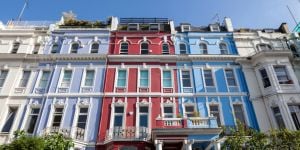


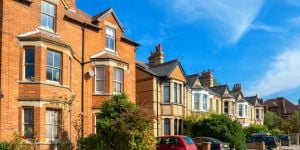
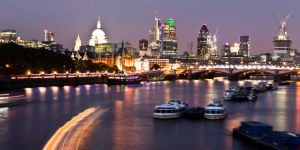
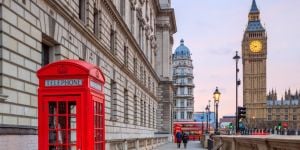

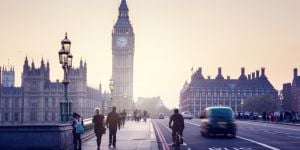




Comments